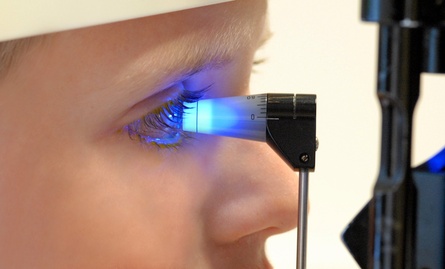by
Stepy —
October 28, 2013
- Glaucoma is one of the leading causes of blindness in the United States. “Glaucoma is not just one eye disease, but a group of eye conditions resulting in optic nerve damage, which may cause loss of vision,” states Mayo Clinic, “abnormally high pressure inside your eye (intraocular pressure) usually, but not always, causes this damage.”
- It is estimated that glaucoma will affect 80 million people by the year 2020. This disease can be slowed down when treated early. However, glaucoma is usually not detected until the late stages, and by then it is too late.
- Currently, there are three methods that ophthalmologists use to detect glaucoma.
- Method 1: Assessment of increased pressure in the eyeball. Not sensitive enough to detect glaucoma in early stages.
- Method 2: Assessment of abnormal vision. Requires specialized equipment, unsuitable for widespread screening.
- Method 3: Assessment to damage of the optic nerve. Most reliable method of the three but requires specialized training, a lot of time, expensive, and very subjective.
- “Glaucoma is characterized by a vertical elongation of the optic cup, a white area at the center of the optic nerve head, or optic disc,” states Science Daily, “this elongation alters the cup-to-disc ratio (CDR) but does not normally affect vision.
- A technique developed by Jun Cheng, of the A*STAR Institute for Infocomm Research in Singapore measures the CDR using two-dimensional images.
- From over 2,000 test images, Cheng and his team found that this technique is much more efficient and accurate than other methods.
- The technique takes only 10 seconds on a standard computer. It is a less laborious method because it is automated.
- “The technique is ready to be used widely and can be used for screening so that glaucoma can be detected early,” states Cheng. The team will continue to improve this method. Cheng adds, “We can include more data in the training to improve the accuracy.” This new technique may allow physicians to detect glaucoma earlier, so they can begin treatment in early stages which is much more effective.
- The relationship of omega-3s to eye health.
-
- REFERENCES:
- 1. “Ophthalmology: Automated Method to Detect Glaucoma in Its Early Stages.” ScienceDaily. ScienceDaily, 11 Sept. 2013. Web. 16 Sept. 2013.
- 2. Cheng, Jun. “Superpixel Classification Based Optic Disc and Optic Cup Segmentation for Glaucoma Screening.” IEEE Xplore. IEEE Xplore, 18 Feb. 2013. Web. 16 Sept. 2013.
- 3. Staff, Mayo Clinic. “Glaucoma.” Mayo Clinic. Mayo Foundation for Medical Education and Research, 02 Oct. 2012. Web. 16 Sept. 2013.


















